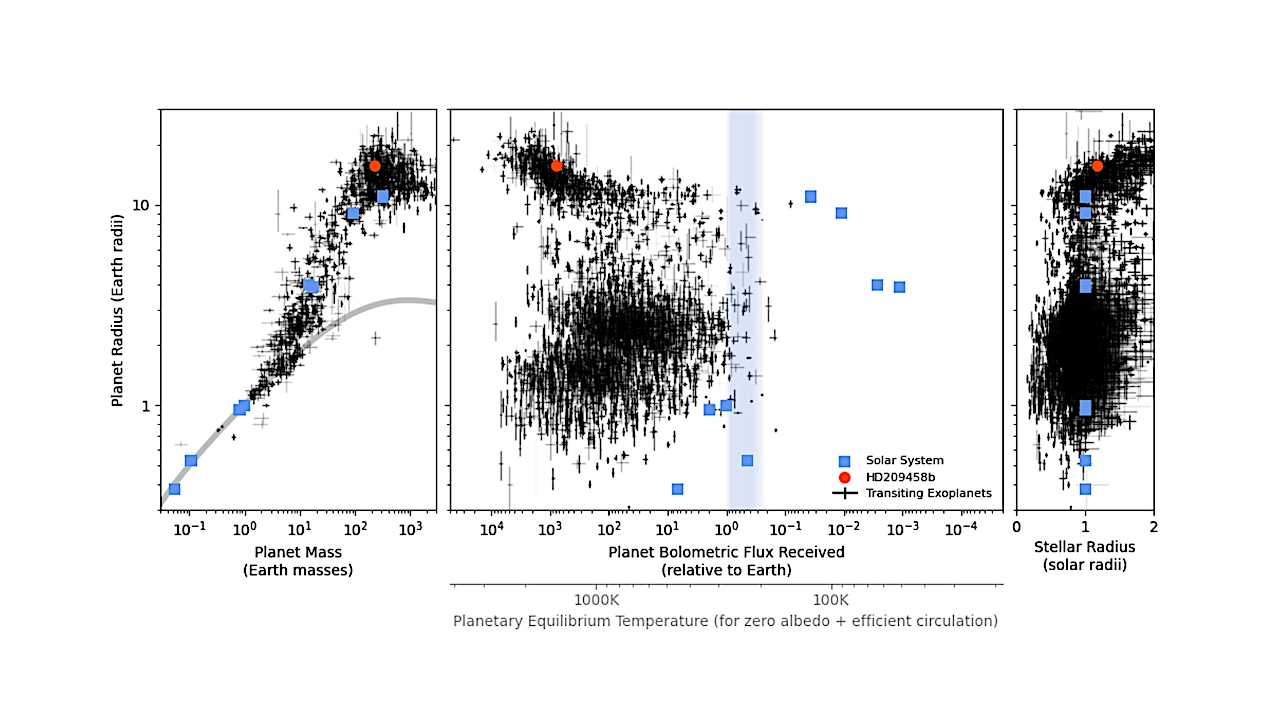Example exoatlas visualization placing the first discovered transiting exoplanet HD209458b in context with other transiting exoplanets and the eight major Solar System planets. Errorbars use a color intensity that scales inversely with quantity uncertainties, to avoid giving undue visual weight to the least precise data. — astro-ph.IM
Planets are complicated. Understanding how they work requires connecting individual objects to the context of broader populations.
Exoplanets are easier to picture next to their closest Solar System archetypes, and planets in the Solar System are richer when seen alongside a growing community of known exoplanets in the Milky Way.
The exoatlas toolkit provides a friendly Python interface for retrieving and working with populations of planets, aiming to simplify the process of placing worlds in context.
Zach K. Berta-Thompson, Patcharapol Wachiraphan, Autumn Stephens, Mirielle Caradonna, Catriona Murray, Valerie Arriero, Jackson Avery, Girish M. Duvvuri, Sebastian Pineda
Comments: Submitted to the Journal of Open Source Software. Please try it at this link https://zkbt.github.io/exoatlas/ and submit GitHub Issues with bugs or suggestions for improvement!
Subjects: Instrumentation and Methods for Astrophysics (astro-ph.IM); Earth and Planetary Astrophysics (astro-ph.EP); Solar and Stellar Astrophysics (astro-ph.SR)
Cite as: arXiv:2507.02210 [astro-ph.IM] (or arXiv:2507.02210v1 [astro-ph.IM] for this version)
https://doi.org/10.48550/arXiv.2507.02210
Focus to learn more
Submission history
From: Zach K. Berta-Thompson
[v1] Thu, 3 Jul 2025 00:14:38 UTC (250 KB)
https://arxiv.org/abs/2507.02210
Astrobiology

